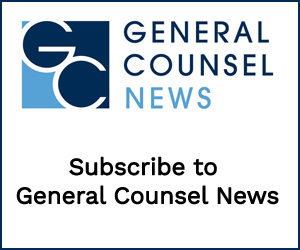Burden of Proof in Copyright Infringement Matters
By Keli Johnson Swan
Scott & Scott LLP
In a civil copyright infringement claim, many users of copyrighted material are surprised to learn that once the copyright owner has demonstrated that it owns a copyright in the work, the burden shifts to the copyright user to demonstrate that it had the right to use the work in the way it was using it. For copyrighted software use, this means that not only must the user have a valid license, the use case must fall within the scope of the license terms. Software publishers actively protect their copyrighted material by pursuing audits of its consumers either directly or through entities such as BSA|The Software Alliance, or the Software & Information Industry Association (“SIIA”).
There are two vital steps to proving a consumer is innocent of copyright infringement.
1. Providing proof of purchase documentation for the license.
The license agreement itself often provides the authority for the publishers to audit any consumer of its product, but there are usually little or no guidance in the license agreement for what proof will be acceptable in a license review. This is further complicated by the fact that the BSA and SIIA issue their own set of audit standards when investigating potential compliance gaps.
In order to demonstrate a license to use software that is acceptable to the BSA and SIIA in an audit, the consumer must provide a copy of an entitlement that shows the date purchased, price paid, software version and title, quantity, and the company name. Many consumers do not keep accurate records of software purchases, particularly for products that are very old. The auditing entity will presume there is no license unless the user can provide documentation of its license, regardless of the age of the software installed.
However, there are different types of documentation that may be used to prove ownership of a license, including, but not limited to:
a. Customer purchase history reports from vendors such as CDW and Dell;
b. Dell Service Tag Reports;
c. E-mail confirmations for software purchases;
d. Microsoft Licensing Statement;
e. Adobe Licensing Statement;
f. Autodesk Licensing Statement;
g. Software publisher agreements (ex. Microsoft EA);
h. Autodesk serial numbers (if registered correctly);
i. Hardware purchases with OEM operating systems or Microsoft Office software; or
j. Software registration confirmations.
It is always helpful to acquire a report from a vendor if possible to acquire a purchase history, or alternatively, a licensing statement from the publisher itself.
2. Demonstrating compliance with license terms.
In addition to providing evidence its licenses, a consumer often must demonstrate that it has complied with the terms of the license agreement for the software installed. For example, some Home or Student versions software specifically restricts commercial use, so if a business has these versions installed and is using it to generate revenue, the license is invalid because the use case is outside the scope of the license grant.
There are more complicated use cases that also violate the terms of license agreements, ranging from geographic restrictions, installing software on affiliate or related entities’ machines without approval, installing software on servers, or installing software on hosted servers without the appropriate licenses.
In order to avoid potential copyright infringement claims and monetary penalties, it is prudent for consumers to conduct regular internal audits, consistently retain all software purchase records, and closely evaluate the use cases to ensure compliance with the relevant license agreements.




